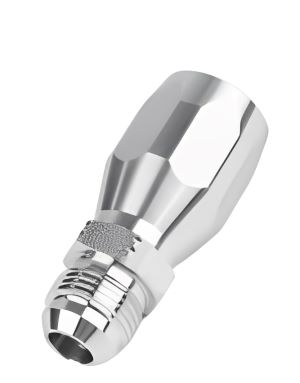Keeping your hydraulic systems running smoothly relies heavily on secure and reliable hose fittings. While crimp fittings are a popular choice, reusable hydraulic hose fittings offer a unique set of advantages.
This guide will equip you with the knowledge to choose, install, maintain, and safely use reusable hydraulic hose fittings.
Choosing the Right Reusable Hydraulic Hose Fitting
There are two main types of reusable hydraulic hose fittings:
➡️ Crimp Fittings: These fittings consist of a body, a sleeve, and a ferrule. The hose is inserted into the body, and the sleeve is crimped around the hose and ferrule using a hydraulic crimping tool.
➡️ Flange Fittings: These fittings consist of two halves that are bolted together around the hose. Flange fittings are ideal for high-pressure applications and frequent assembly/disassembly.
choosing a reusable hydraulic hose fitting, consider the following factors:
➡️ Pressure Rating: Ensure the fitting’s pressure rating exceeds the maximum pressure your system will experience.
➡️ Material Compatibility: The fitting material should be compatible with both the hydraulic fluid and the hose material.
➡️ Size: The fitting size needs to match the hose diameter and thread type.
➡️ Application: Certain applications, like high vibration environments, may require specific fitting features.
Common Mistakes to Avoid:
1. Using a fitting with an inadequate pressure rating.
2. Mismatching the fitting material with the hose and fluid.
3. Selecting an incorrect size fitting for the hose.
Proper Installation of Reusable Hydraulic Hose Fittings
Installing reusable hydraulic hose fittings requires following a specific procedure for optimal performance and safety. Here’s a general outline:
1. Cut the hose squarely using a sharp hose cutter.
2. Insert the fitting onto the hose, following the manufacturer’s instructions.
3. For crimp fittings: Use a calibrated hydraulic crimper to compress the sleeve around the hose and ferrule according to the manufacturer’s specifications.
4. For flange fittings: Tighten the bolts to the recommended torque using a wrench.
Crucially, always refer to the manufacturer’s instructions for the specific fitting you’re using.
Installation Tools:
➡️ Hose cutter
➡️ Hydraulic crimper (for crimp fittings)
➡️ Wrenches (for flange fittings)
➡️ Deburring tool (optional)
Maintenance and Inspection of Reusable Hydraulic Hose Fittings
Regular maintenance and inspection are crucial for ensuring the safe and reliable operation of your hydraulic system. Here’s what to keep in mind:
➡️ Inspect fittings regularly for signs of wear and damage, such as leaks, cracks, or loose connections. The frequency of inspection depends on the application’s severity. High-pressure or high-vibration environments may require more frequent checks.
➡️ Visually inspect the hose for signs of deterioration, like bulging, discoloration, or cuts.
➡️ Tighten loose connections as needed, following the manufacturer’s torque specifications.
Considerations When Using Reusable Hydraulic Hose Fittings
Hydraulic systems operate under high pressure and can contain hazardous fluids. You should observe the following safety precautions:
➡️ Always wear proper safety gear, including gloves, safety glasses, and protective clothing, when working with hydraulic systems.
➡️ Be aware of the potential hazards of hydraulic fluid leaks and hose failures, which can cause serious injuries.
➡️ Never attempt to repair a leak while the system is pressurized.
➡️ If you suspect a leak or damage, shut down the system and consult a qualified hydraulics professional for repairs.
Conclusion
By following these expert tips, you can ensure the proper selection, installation, maintenance, and safe use of reusable hydraulic hose fittings. Remember, reusable fittings offer cost-effective and environmentally friendly benefits, but prioritize safety by using them correctly.
If you have any questions or require further assistance, don’t hesitate to consult with a qualified hydraulics professional.
Post time: Jul-18-2024


